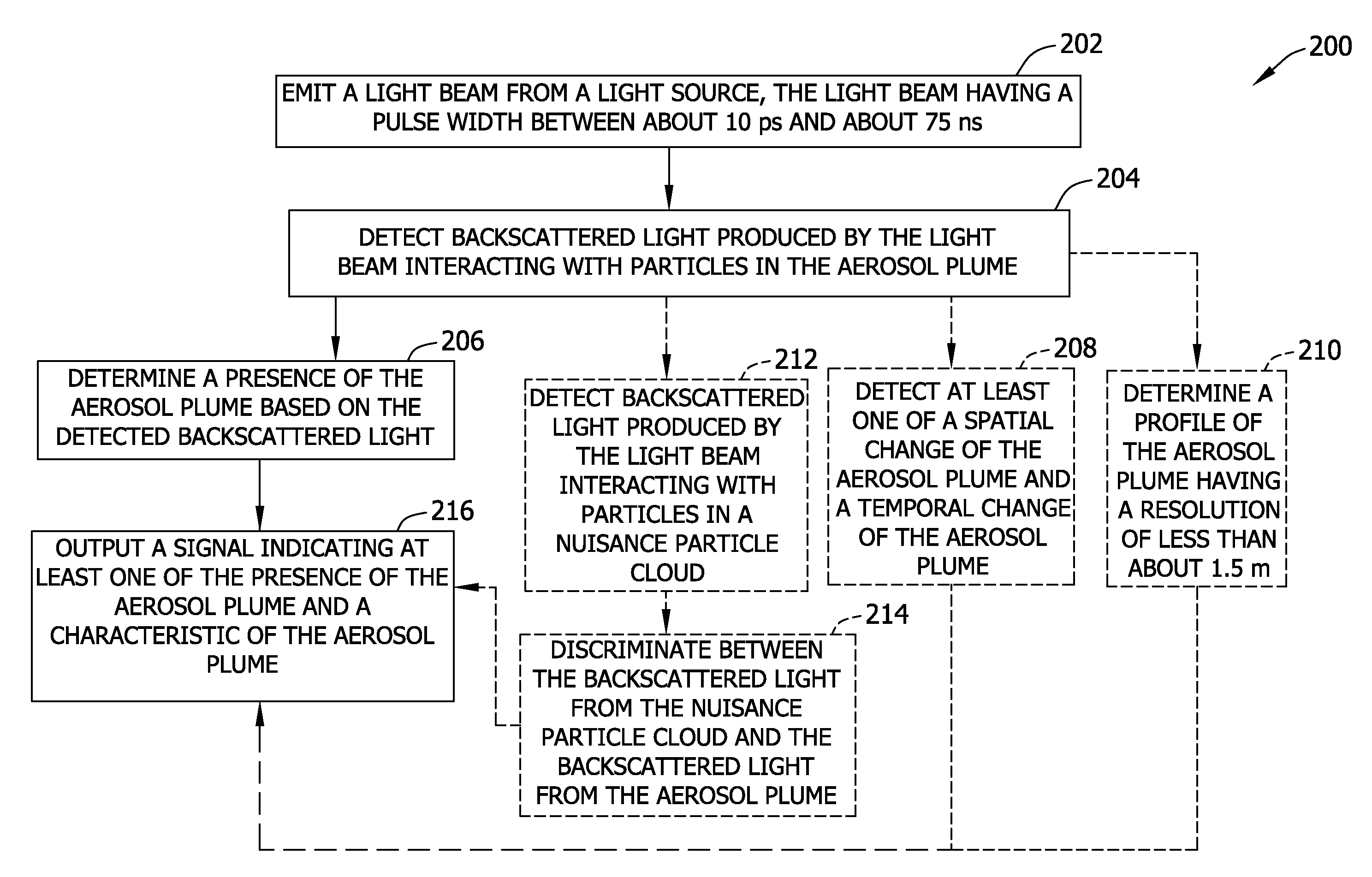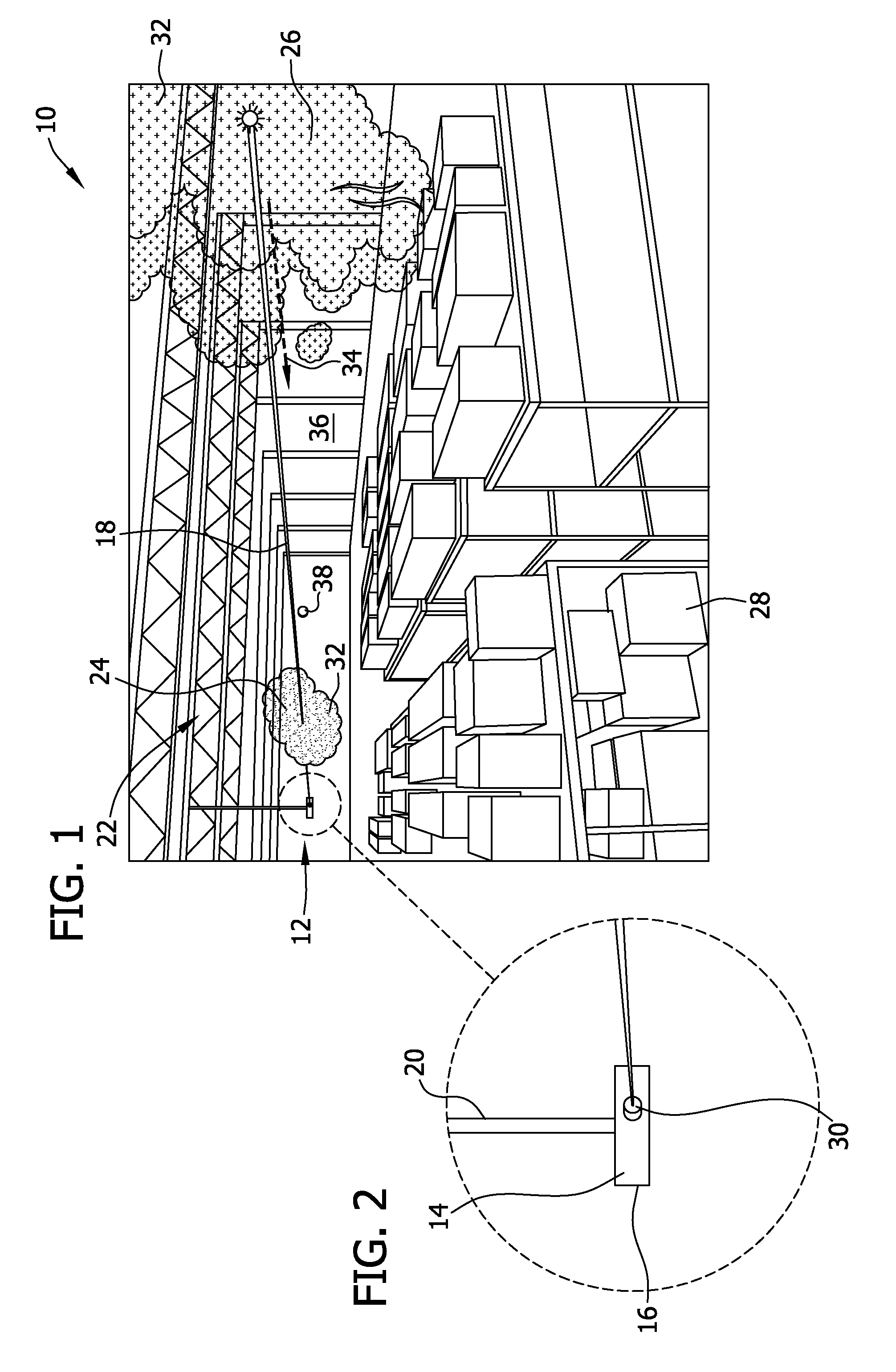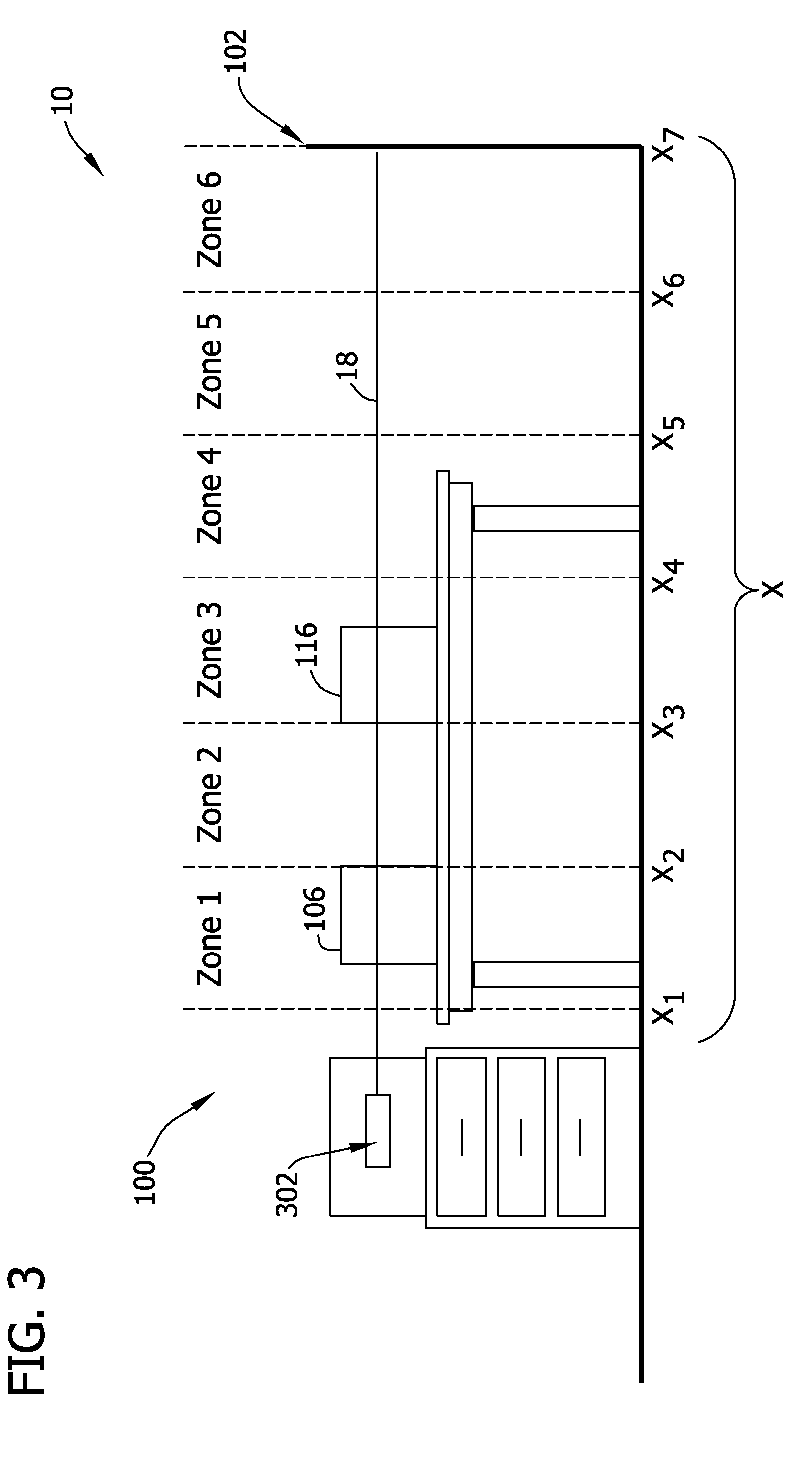Particle detection system and method of detecting particles
a particle detection and particle technology, applied in the field of particle detection systems, can solve the problems of limited use of smoke/fire detectors, high installation and maintenance costs of smoke detectors, and limited use of each of these types of smoke/fire detectors
- Summary
- Abstract
- Description
- Claims
- Application Information
AI Technical Summary
Benefits of technology
Problems solved by technology
Method used
Image
Examples
Embodiment Construction
[0023]The embodiments described herein use high spatial resolution LIght Detection And Ranging (LIDAR) for early detection of aerosol plumes produced by events, such as the pyrolysis and / or combustion of combustible materials. As used herein, the term “pyrolysis” refers to a chemical decomposition induced in organic materials by heat in an environment substantially free of oxygen. Pyrolysis creates a plume of particles / particulates, or an aerosol plume, before combustion begins. As such, the aerosol plume generated through pyrolysis includes pre-combustion gases rather than combustion gases, such as smoke. During pre-pyrolysis / pyrolysis there is generally insufficient energy to decompose a base material, additive / oligomer gases are produced near a heat source, and gases condense into particulates (aerosols) at room temperatures. As used herein, the term “oligomer” refers to a compound intermediate between a monomer and a polymer, normally having a relative small number of structural...
PUM
 Login to View More
Login to View More Abstract
Description
Claims
Application Information
 Login to View More
Login to View More - R&D
- Intellectual Property
- Life Sciences
- Materials
- Tech Scout
- Unparalleled Data Quality
- Higher Quality Content
- 60% Fewer Hallucinations
Browse by: Latest US Patents, China's latest patents, Technical Efficacy Thesaurus, Application Domain, Technology Topic, Popular Technical Reports.
© 2025 PatSnap. All rights reserved.Legal|Privacy policy|Modern Slavery Act Transparency Statement|Sitemap|About US| Contact US: help@patsnap.com



